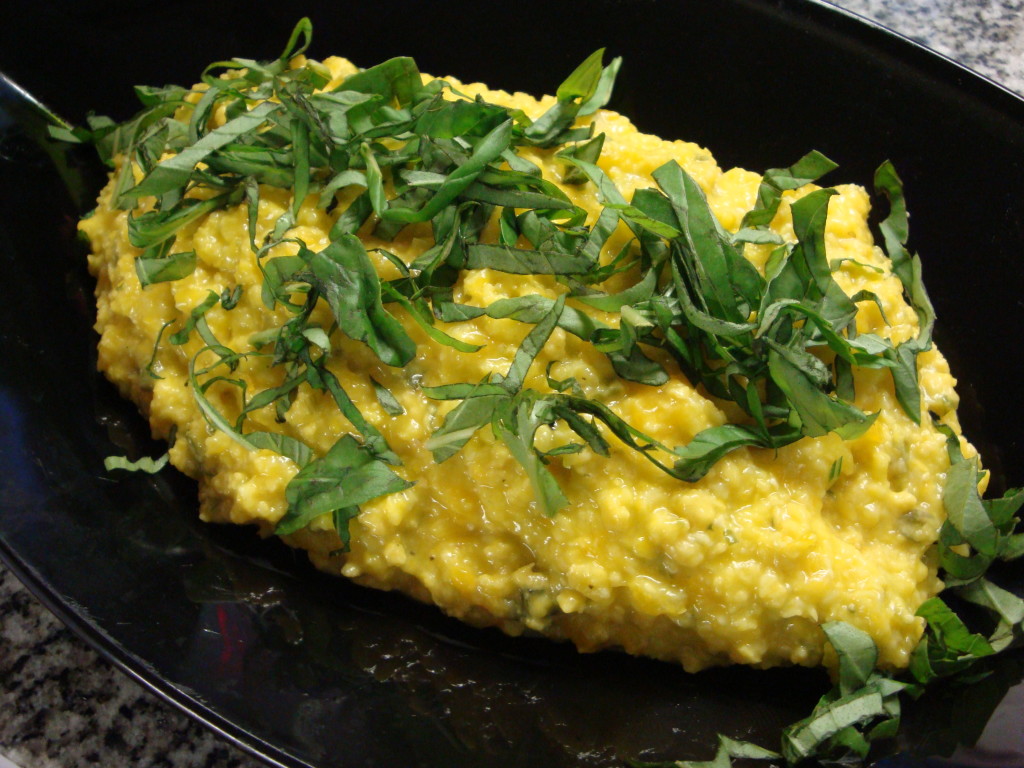On Sunday supplement
Food and Wine
If you read the modern food press, you couldn’t be faulted for coming away with the impression that corn is the root of all evil. Movies have been made, books have been written – it makes us fat, it ruins our lives, it steals our money, it kisses babies, causes polygamy. I don’t know, I grew up with fields of corn surrounding us, stalks waving in the breeze, and we ate the stuff all the time, fresh from the field, packaged from the grocery store, and in a wide variety of forms. I’ll give you that there may be some evidence for the evils of high fructose corn syrup. Some. There’s debatable evidence on both sides of the argument.
But in its natural state there’s little more glorious in the grain world than corn. Despite being a grain, or cereal, it tends to be treated as a vegetable (except in dried form where we have polenta, grits, and porridges), and is more often cooked in ways that a vegetable would be. It’s reasonably nutritious, by no means the most, though it is one of the few grains or vegetables out there that supplies any quantity of the amino acid lutein, a necessary nutrient. Oh, and it tastes delicious, right?
An indigenous grain to southeastern Mexico, it was domesticated by the Taino people and due to its relative ease to grow, spread throughout the Americas, where it is the principal grain grown. Not all of it is grown for food, a large percentage (in the U.S. alone some 40%) these days goes to the making of biofuel. Here in Argentina, while not the largest crop grown (although until the introduction of massive soy farms, it pretty much was), some 13 million tons of corn is produced annually, making it the sixth largest producer of corn in the world.
And, Argentine cuisine makes good use of corn. Whether it’s rounds of choclo in a stew, dried white corn in locro, toasted corn kernels as snacks and garnishes, ground, dried corn in tamales, or, ground fresh corn in the local favorite, humitas, it’s all around us.
Now, many of us have tried empanadas filled with either whole or fresh corn, and also the steamed, corn husk wrapped humita version, one of the most common things I hear about them is “they’re too sweet”. Look, we all know that Argentines, particularly here in Buenos Aires, have a bit of a sweet tooth. It’s just built into the culture, and, we get used to it – it’s not that hard of an adaptation. But not all versions of these dishes are sweet, and one of my favorites is the humitas en olla, a classic of Salta that’s even got a bit of spice. I’ve spiked it up a notch or two and replaced the traditional beef fat with olive oil and the cheeses with lower fat versions, but I guarantee it’ll put humitas in a whole new light.
Humitas en Olla
6 ears corn on the cob
4 green onions, finely chopped
1 wedge or slice of yellow squash, in small dice (about 200 gms)
1-2 jalapeños, minced
100 grams olive oil
120 ml of low fat or skim milk
150 grams light port salut, cut in cubes
basil, chopped or shredded
salt, pepper to taste
Scrape the kernels from the cobs – it’s best to actually use a grater to do this, if you don’t have one, cut them off and give them a quick whirl in a food processor or blender, or even chop by hand.
In a pot (“en olla”), cook the onions , squash and chili in the oil with a little salt and pepper and cook over medium heat for 10 minutes, stirring occasionally. Add the grated corn, and just enough of the milk to keep it a wet mixture. Cook, stirring regularly, as it absorbs the liquid – add more milk as needed. When the corn is cooked through, add the cheese, and cook, stirring constantly, until the mixture pulls away from the sides. Season to taste and garnish with basil.
A series of recipes and articles that I started writing for the Buenos Aires Herald Sunday supplement, Food & Wine section, at the beginning of 2012. My original proposal to them was to take local favorite dishes and classics and lighten them up for modern day sensibilities. We’re not talking spa or diet recipes, but at the very least, making them healthier in content, particularly salt, fat and portion size. As time went by, that morphed into a recipe column that, while emphasizing food that is relatively “good for you”, wasn’t necessarily focused on local cuisine. At the beginning of 2013 I decided to stop writing for them over some administrative issues, but it was fun while it lasted.
